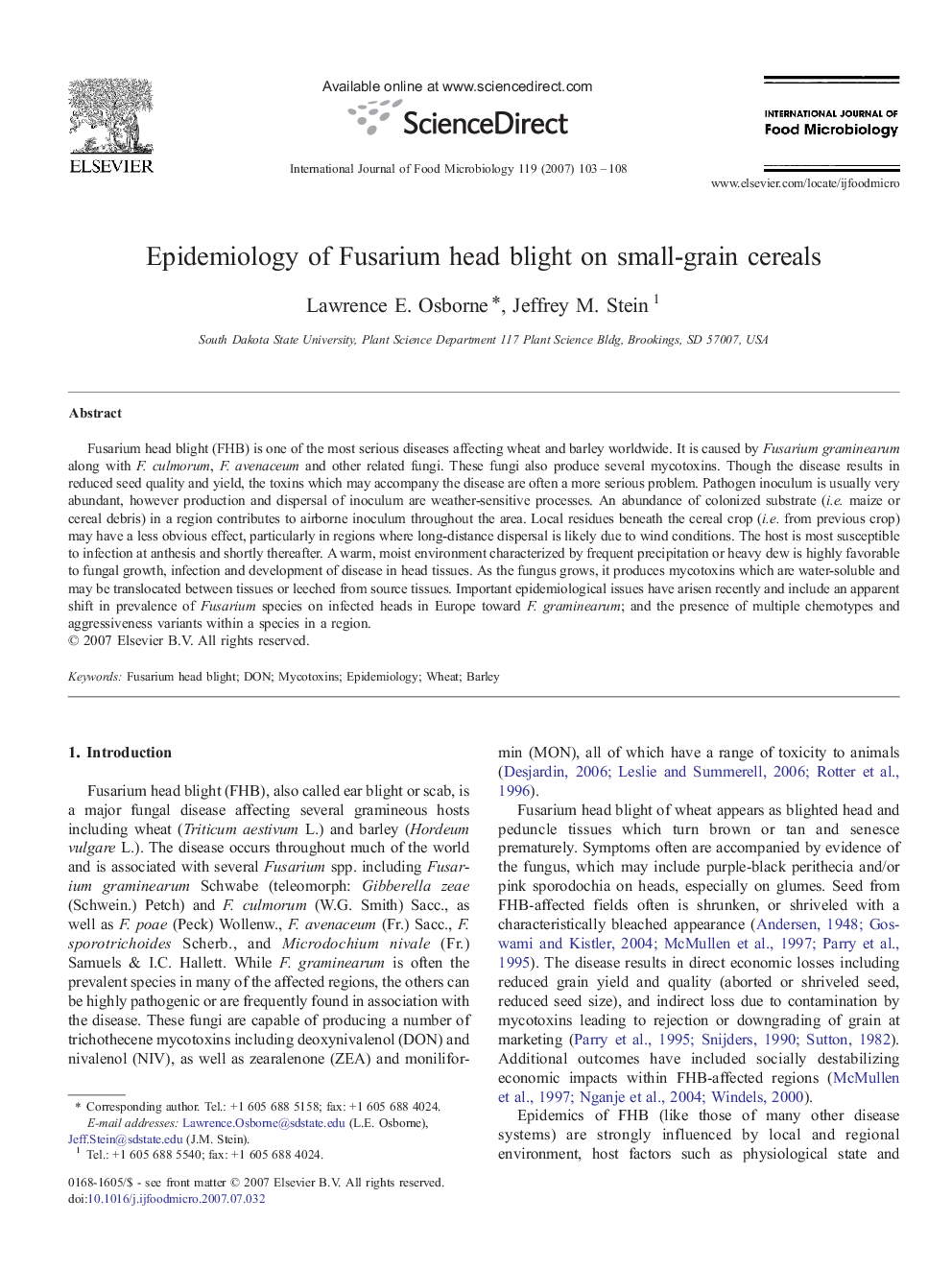| کد مقاله | کد نشریه | سال انتشار | مقاله انگلیسی | نسخه تمام متن |
|---|---|---|---|---|
| 4369333 | 1616738 | 2007 | 6 صفحه PDF | دانلود رایگان |

Fusarium head blight (FHB) is one of the most serious diseases affecting wheat and barley worldwide. It is caused by Fusarium graminearum along with F. culmorum, F. avenaceum and other related fungi. These fungi also produce several mycotoxins. Though the disease results in reduced seed quality and yield, the toxins which may accompany the disease are often a more serious problem. Pathogen inoculum is usually very abundant, however production and dispersal of inoculum are weather-sensitive processes. An abundance of colonized substrate (i.e. maize or cereal debris) in a region contributes to airborne inoculum throughout the area. Local residues beneath the cereal crop (i.e. from previous crop) may have a less obvious effect, particularly in regions where long-distance dispersal is likely due to wind conditions. The host is most susceptible to infection at anthesis and shortly thereafter. A warm, moist environment characterized by frequent precipitation or heavy dew is highly favorable to fungal growth, infection and development of disease in head tissues. As the fungus grows, it produces mycotoxins which are water-soluble and may be translocated between tissues or leeched from source tissues. Important epidemiological issues have arisen recently and include an apparent shift in prevalence of Fusarium species on infected heads in Europe toward F. graminearum; and the presence of multiple chemotypes and aggressiveness variants within a species in a region.
Journal: International Journal of Food Microbiology - Volume 119, Issues 1–2, 20 October 2007, Pages 103–108